The Secret of Different Dark Lips Correction
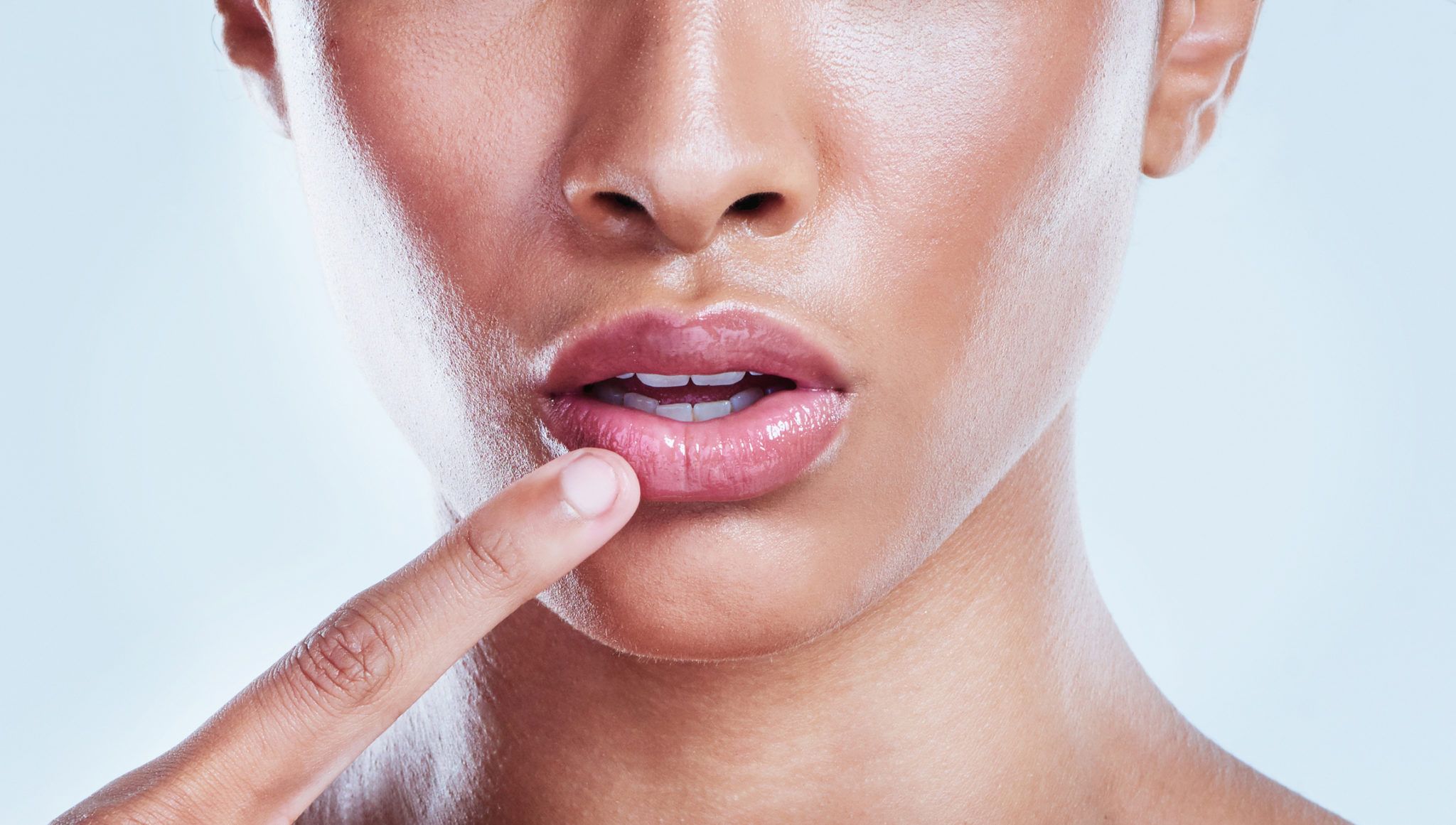
Lips come in all colors, sizes, and shapes. Let’s talk about lip correction treatments, this could be a life-changing procedure for many clients that struggle with discolored lips. Dark lip clients typically expect their lips to be even-toned and lighter. While pale lips clients wish to define the vermilion border and have more color coverage.
Every client requires a different approach to reach the best outcome, simply because every lip is unique. Especially dark lips correction has been controversial for many years in the permanent makeup industry, however, it keeps getting more popular with female and male clients who wish to correct or lighten their lips. Many artists don’t like to work on dark lips because it is hard to get good results right away. This is for sure a specialty area of work. In recent years, however, there has been a positive trend in dark lips micropigmentation. Many permanent makeup studios are now offering pigment colors that are recommended especially for African-American, Indian, Hispanic, or Asian skin.
Not every client is the right candidate for dark lips color correction
Many permanent makeup artists reject clients with darker lips. Not every client is the right candidate for this treatment. Melanin-rich skin is very tricky to work on. Ethic lips correction is an extremely advanced technique that requires knowledge of color theory and the right color selection.
What Is Lips Neutralization
Any lip correction is not going to happen during one session, especially ethnic lips correction could be a multiple session treatment. Only gentle technique and the right color match could do the work. It is important to choose pigments with a safe amount of Titanium Dioxide (white pigment) and high pigment concentration. Correction of bluish or purplish lips is not an easy case, actually, it is a very challenging task! During the first dark lips correction session, it is important to neutralize cool tones and lift the darkness of lips with a help of warm-based pigment and then work with red-based colors.
Before Dark Lips Correction
Before lips tattooing is it important to ask the client during the consultation about the skin healing reactions to the wounds. Does their skin heal lighter or darker than their skin tone after scratch or injury? If the darkness in the lips is associated with any trauma, you should avoid this procedure! The procedure could cause hyper or hypopigmentation. African-American skin, along with Hispanic and Asian skin, is more prone to hyperpigmentation.
If the client has evidence of hyperpigmentation, then the trauma to the skin can create more hyper spots. Moreover, the trauma from the procedure can create darker pigmentation in already melanin-rich skin, aside from permanent makeup pigment implanted.
Hypopigmentation refers to white patches of skin that are lighter than your overall skin tone. Your skin's pigmentation, or color, is based on the production of a substance called melanin. If your skin cells don't produce enough melanin, the skin can lighten or get light spots.
Dark Lips Healing Process
When tattoos on dark lips start to heal and peel it might be a bit ugly process. It can go light or dark in some spots. Sometimes clients might experience post-inflammatory hyperpigmentation or hypopigmentation that goes away but could be scary for a client. Depending on how dark and hyperpigmented the lips are it might take multiple sessions to neutralize lips. The healing process of dark lips can be weird, sometimes clients’ lips get darker at the beginning and lighten up after a few weeks. With darker lips, healing takes 8-10 weeks; it is a long process.
Most Common Causes of Dark Lips
Discolored lips can be the result of a few things that range from harmless, like staining from certain foods or drinks to an underlying medical condition.
- Trauma or injury. A bruise can form on one or both lips following an injury. This can cause your lips to be partly or entirely purple or black
- Smoking, the burns from the cigarette can cause a black spot on your lips
- Lack of Vitamins such as B12
- Dehydration-Inadequacy of water in the body resulting in lips during and cracking causing
- Minor injuries, scars
- Hyperpigmentation is also called Melasma. This is an abnormal increase of the melanin on the skin especially on the lips which is a result of prolonged exposure to the sun or licking your lips too much.
- Hormone disorder in the body (the thyroid problems)
- Certain medications also could cause darkening of lips for example phenytoin
- too much caffeine
- Lip sucking
- Allergic reactions to foods, toothpaste, lipstick, or cosmetics
- Lips that turn blue may be a sign that there’s not enough oxygen available from the bloodstream
- Certain chemicals in lipsticks may also cause rashes and pigmentation so it’s good to know the ingredients and work with natural lipsticks
Skin Conditions Related to Melanin
Discolored lips can include spots, too. The causes of spotted lips range from harmless sunspots to spots that are a symptom of a medical condition. Many clients complain about the lack of pigmentation in the lips after multiple cold sores, caused by the herpes simplex virus. Those white spots could be covered with lip tattoos, however, sometimes it requires few sessions to implement the pigment.
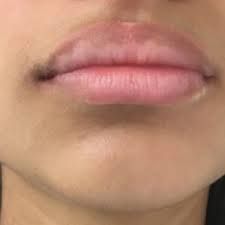
Vitiligo is a long-term genetic skin condition in which the cells that produce melanin, the substance responsible for skin color, die or stop functioning, causing white patches to appear. The goal is to make the skin more even, bring back the color by tattooing with pigment matched with skin tone. Lips that are discolored or uneven in color can be filled in with natural lip colors. There’s also the risk of koebnerization which is the response of the skin to trauma that revels in new patches emerging, which may result from either a linear exposure or irritation. The Koebner phenomenon, first described in 1876 by Heinrich Koebner, is the appearance of new skin lesions on previously unaffected skin secondary to trauma.
Fordyce spots are whitish-yellow bumps that can occur on the edge of your lips. These are known as ectopic sebaceous glands. These harmless spots can cause concern because of their appearance but do not present any health risks. They are a cosmetic concern only, that can be corrected with lips semi-permanent makeup.
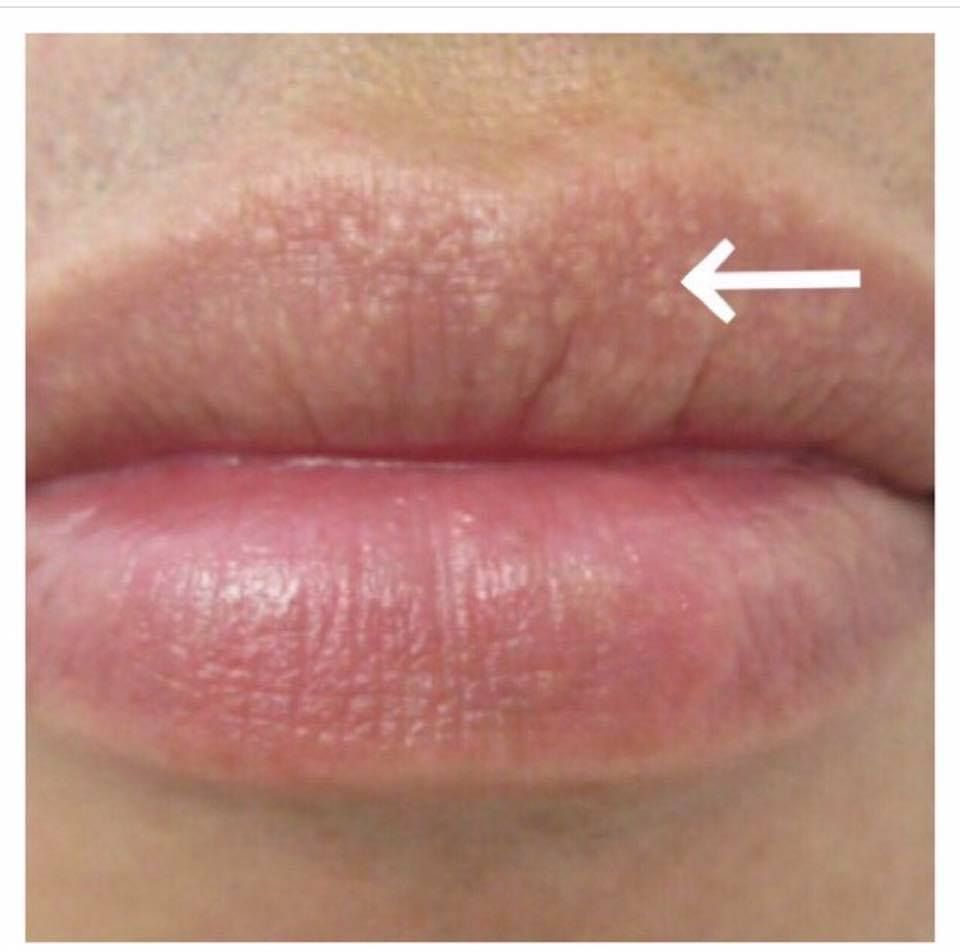
Smokers Lips
We can neutralize smokers' lips, if clients were smokers in the past, if the trauma is recent we don't work on clients. Skin needs to heal for 2-3 months at least, after the procedure clients need to avoid trauma. It is recommended to stop smoking at least for 7 days after the procedure.
Variety of Hues of Melanin-Rich Lips
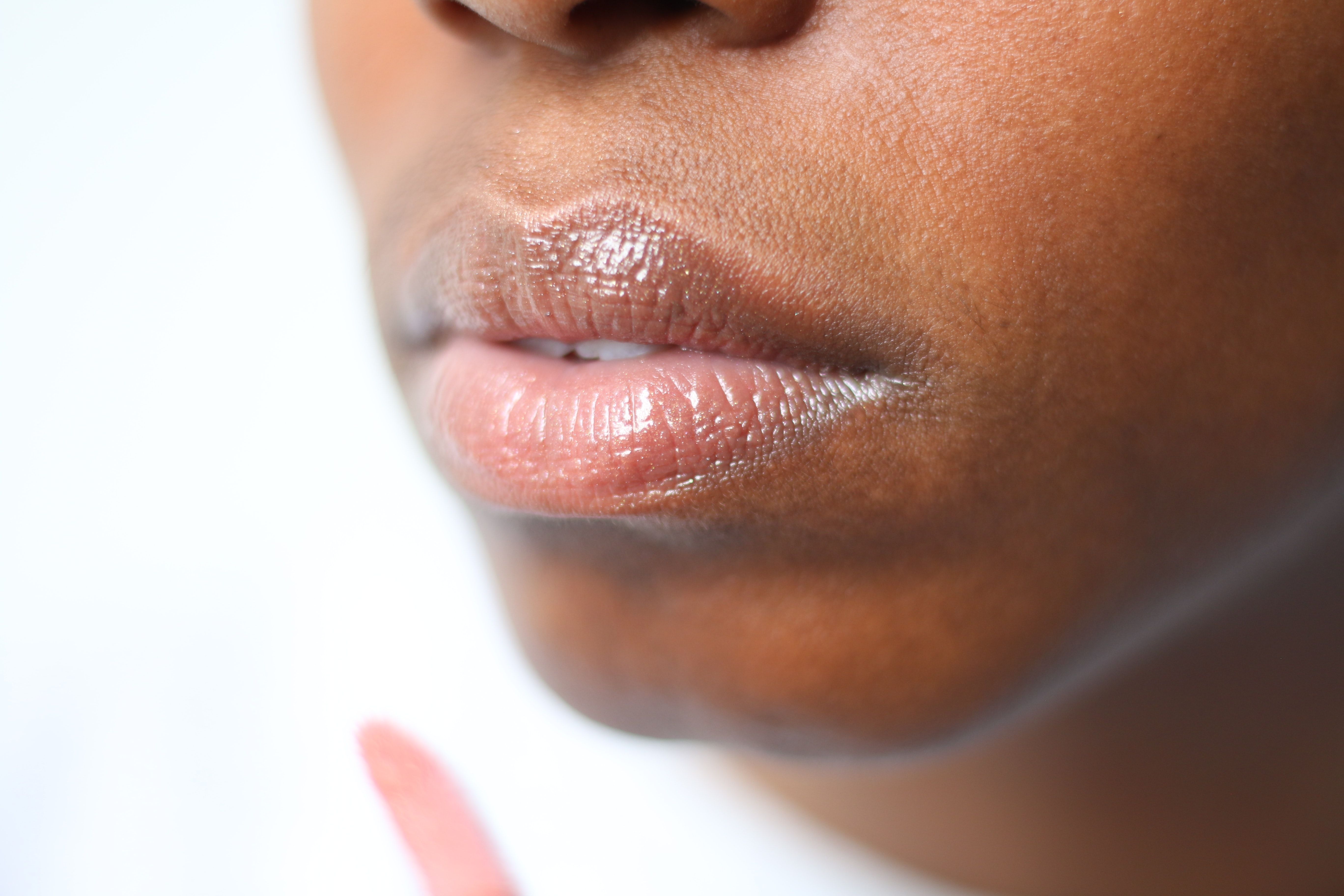
When we choose a color for correction we need to determine the color hue of the client’s lips based on this we create a custom pigment mix. Some clients have greyish, purplish, brownish hues. We need to determine the most prominent hue. These days we have special pigments created for neutralization that are safe to use and contain a less white pigment which we want to avoid because white has titanium dioxide large molecules that stay in the skin forever and are not removable. Titanium dioxide is not an enemy, we just need to make sure we won't put too much white pigment in dark lips. Every skin is unique and we need to determine the right technique and professional machine. Some cheap Chinese machines create much trauma and swelling. We need a powerful and quality machine because we don't want to overwork the lips.
Correction of Uneven Lip Tones
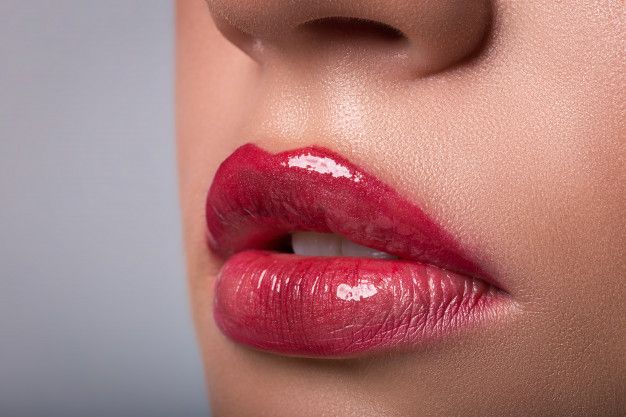
The best colors to neutralize cool and dark lips recommended by artists that specialize in this type of corrections include:
- Gold/yellow tone - especially recommended for lips with a deep, dark purple undertone
- Orange/bright warm tone color, corrector light-medium dark lips with a bluish tone. Orange heels pink.
After a neutralization session in most cases after 6-8 or more weeks, if the healed result is good, the artist can use targeted color. It is recommended to avoid cool colors like blue, violet, or carbon black when working on dark lips.
Male Lips
For male lips we want to have ultra-natural results, depending on how dark the lips and how tight the skin is. We dilute the pigment and use the same technique.
To cancel out the darkness and out the lip color, you will need multiple sessions 2-3 are required. During the first session, only yellow or orange will be used to create an even colored canvas. At your second session, the artist will check healed results and decide either to repeat the same process or use the targeted color. Sometimes artists can decide to use a mix of the neutralizer and target color in the first session, it is a very individual process.

The procedure is not pain-free, usually, every person can handle one pass. We use numbing after scratching the surface of the skin, this way it works faster. It works immediately and we don't have to wait. Please remember to exfoliate lips 7 days before the procedure and moisturize, this way the procedure is less uncomfortable and easier to implement the pigments. It is important to stay hydrated after the procedure, this way healing will be much better. Less passes in other words fewer pigment layers means less trauma to the skin, that’s why sometimes this is a multi-session journey. It is important to work gently without overworking the skin and using less pressure on the skin. Working with the skin of colors requires lots of patience and understanding of the whole process by the client. Proper shading techniques and machines are important when it comes to lip tattooing. If you aren't using a good quality machine and needless, it can affect the quality of your healed work.
Pale Lips Color Correction with Lip Blush Tattoo
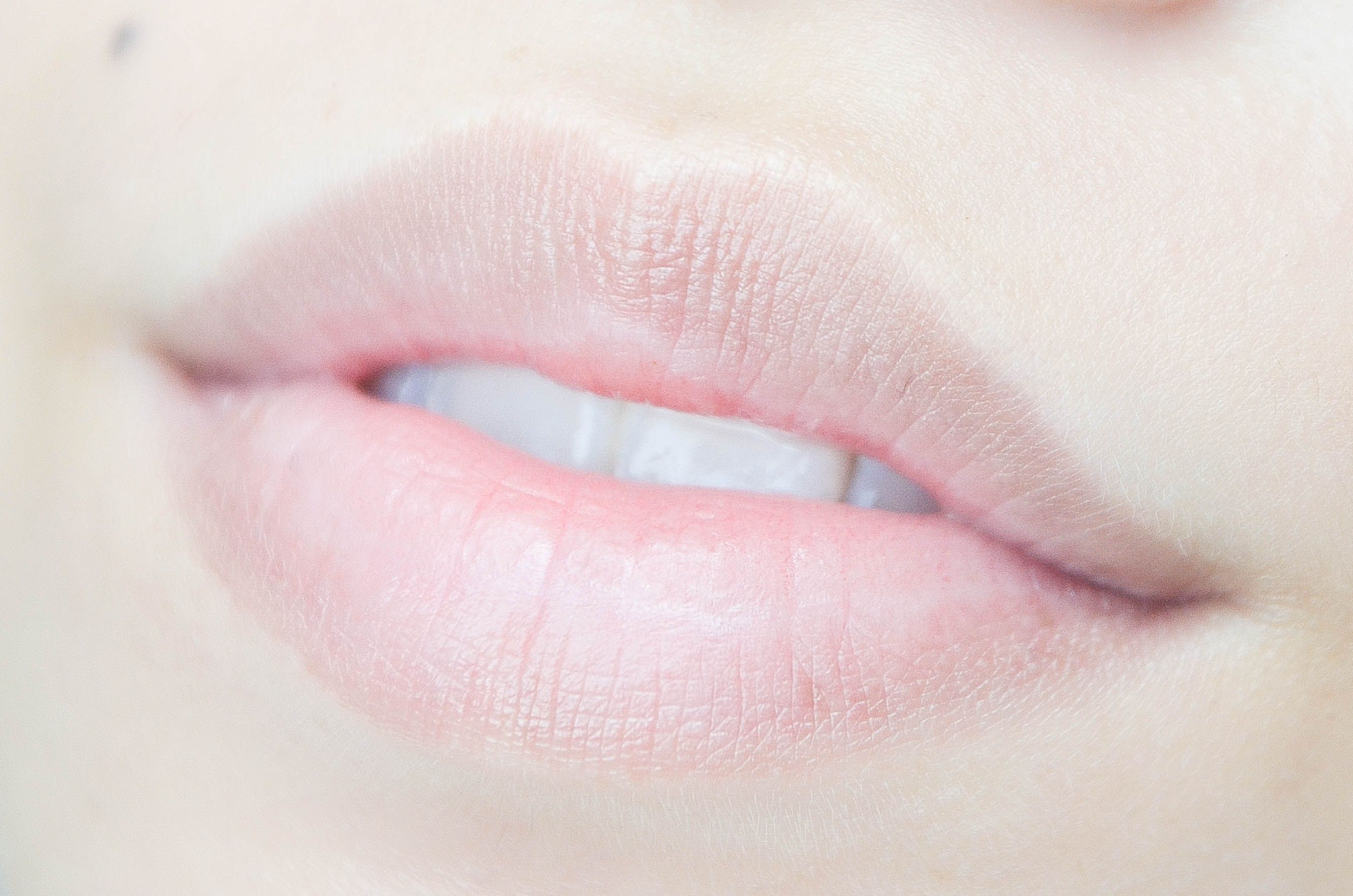
Your natural pinkish lips may turn dull because of different reasons like aging, smoking, dietary insufficiency, allergens in lipsticks, a lot of dryness, or constant cold sores.
Every woman and man who invests in lip filler experiences stretched tissues, this results in pale-looking lips. Clients who invest in lip fillers should consider investing in lip tattoos as well.
The most recommended colors for women with pale skin are nude or peachy shades. Any color close to a peach hue would be ideal for women with pale skin, especially when there is a cool undertone visible in the skin. It is better to stay away from any dark shades since it will create too much contrast.
Different Types of Dark Lip Colors

Dark lips correction is suitable for any Fitzpatrick type clients; it doesn't depend on the Fitzpatrick scale, sometimes it is caused by medication, medical conditions, or sun damage. Many times even light skin tone clients have darkness in their lips. When we tan we need to remember to protect our lips with sunscreen. It is important to find out why the lips have darkness.
Fitzpatrick Skin Scale is a numerical classification schema for human skin color that estimates the response of different types of skin to ultraviolet (UV) light. Developed by Professor Thomas Fitzpatrick MD of Harvard Medical School, is a classification system based on skin pigment to calculate sunlight burning. The classification known as the Fitzpatrick skin type depends on the amount of melanin pigment in the skin. It is used before the micro-pigmentation process, since pigment implanted in the skin interacts directly with melanin, determining the final result of the color.
In the skin, melanin is produced by melanocytes. Melanocytes are cells found in the epidermis and their main task is associated with protection against ultraviolet radiation. When you implant a pigment in the skin, you must consider that the color you are applying will be mixed with the melanin in your client's skin. This is the reason why the same pigment sets in a different way in every person. In general the darker the skin, the darker the end result will be. Lighter skin complexion clients may have a bit more room to experiment with permanent makeup lip colors.
Every time when we use the same mix of pigment and technique we will get different results of lip tattoos. Why does this happen? Most of the melanin is in the epidermis, some in the dermis. Most of it in the epidermis we implant the pigment into the dermal layer. Epidermis always affects healed results. We don’t know how they will heal, lips are unique, sometimes we need to explain to a client that lips transformation doesn't happen overnight.
